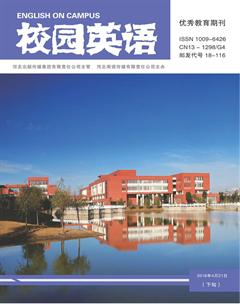ContrastoftheThreeLovePoems
杜丹丹
【Abstract】Love is the eternal theme in literature. The passionate shepherd to his love, The bait and A red, red rose all devote to express love, but the expressing effects are not the same. The article aims to analyze the s poems in several aspects to find out the similarities and differences among them in order to help readers better understand them.
【Key words】love; similarity; difference
1. Introduction
Love is so great that many people can perceive and enjoy. Poets use their special ways to express it. Different perspectives have an effect on the expressions. The passionate shepherd to his love, The bait and A red, red rose are 3 love works of 3 poets. Here, lets begin to analyze the 3 poems.
The 3 poems are from different eras. The first poem is written by Christopher Marlowe, an Elizabethan master. The second poet is a metaphysical wit, while the third poet is in Romanticism. Various backgrounds and characteristics decide their different compose styles.
2. Analysis of the poems
2.1 Tones, theme and effect
The tones of the poems are different. The tone in the first one is happy and passionate; the second one, cynical and flippant; the third one, romantic and brief. The theme in 3 poems are all the same, but for effects, they are different. The first one uses beautiful nature to express love with the words like “valleys, groves, fields”. It describes an active and wonderful picture, making readers to imagine. The second poem also shows love through nature such as “sands, sun, river”, but it shows desires are natural, which pollutes nature. The kind of love is dark and deceit. The third one uses nature, too. Rose is the best explanation. Love is like a red rose, plain but beautiful. In this poem, the words like “sea, sun, sands” occur. The poet appreciates nature a lot and he wants to convey the meaning that no matter what will happen, he will love the girl forever, showing the great and eternal love.
2.2 Writing style
The 3 poems all use alliteration and rhyme. The first one shows freedom of love and beauty of nature in a pastoral tradition. Live&love; belongs to alliteration showing love is related to life. As we live, love always exists Its a short poem of seven quatrains in regular iambic tetrameter with rhyme scheme aabb. The high regularity of foot and the rhyme scheme combined shows a simple folk song, as fresh as wind and as translucent as stream. In the second one, the alliteration live&love; also occurs. And the rhyme is the same with the first, but the emotion changes. The poet makes use of the story of fish and bait to symbolize the love between people. In the third one, “red” and “rose” show the alliteration and repetition. It also uses simile to regard love as roses. Two “red” show the emphasis on the color of rose and express love is bright and deep. The odd lines are tetrameters and the even lines, trimetric. The rhyme of the poem is abcb. The poet uses his special Scottish dialects to describe love. All the alliterations and rhymes are simple. Poets use the simplest and purest ways to describe love. Love is not complicated.
2.3 Attitudes
The attitudes of poets towards love are of differences. The first poet conveys love through nature. Poet is like the shepherd, and the girl is the shepherdess. The shepherd is full of passion and he sends all natural beauty to his loved girl. Love is as pure and clear as nature. He imagines the love with the girl, close to nature. How happily they are getting together. The second poet regards love as the bait. “Bait” is a negative word. There are many negative words like “bait, loath, deceit”. Love seems no longer pure. The word “hooks” shows love is changed into a lie or just a game, unreal and ugly. It is also filled with desires which pollute nature. People are tempted and just pursue the physical desire for immediate pleasure. And the poet is full of satire. The third poet takes love as a red rose and a sweet song. From the line “Till a the seas gang dry... And I will luve thee still, my dear”, we can find in poets opinion, love is sacred, steady and eternal. The last line stresses the theme again. The red color is warm, bright and attractive. This poem shows the Romanticism color.
2.4 Images
Images can better convey the authors thinking directly. The three poems describe three pictures. The first poem uses natural images to mean the relationship between love and nature. “Hill, valley” are silent, but “bird, river” are active. Both of static and dynamic things combine together The poet combines the senses of visual, hearing, and feeling, which makes the poem have the third dimension. The second describes fish is hooked by the bait. “Hooks” and “bait” are images. The line “Gladder to catch thee, than thou him” makes us see the lure is so strong that people cant help being caught. Love lets people lose themselves. The line “O, my luves like a red, red rose. Thats newly sprung in June” in third poem, the poet regards the rose as beloved one meaning the lover is energetic and takes the lover as the melody. Common rose is often used to symbolize love.
3. Conclusion
There are some similarities, for example, they all use natural objects to express different love from the perspectives of theme, writing style, attitudes... Each has its special points. Different people have their own attitudes and points. Three kinds of love exist in our lives. Lets enjoy the poems and think about what love we want.
参考文献:
[1]苏煜.英国诗歌赏析[M].北京:新华出版社,2006.3.
[1]申清丽.美的诗篇,爱的赞歌——罗伯特·彭斯《一朵红红的玫瑰》之赏析[J].河南:驻马店职业技术学院,2013.3.

